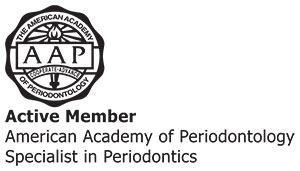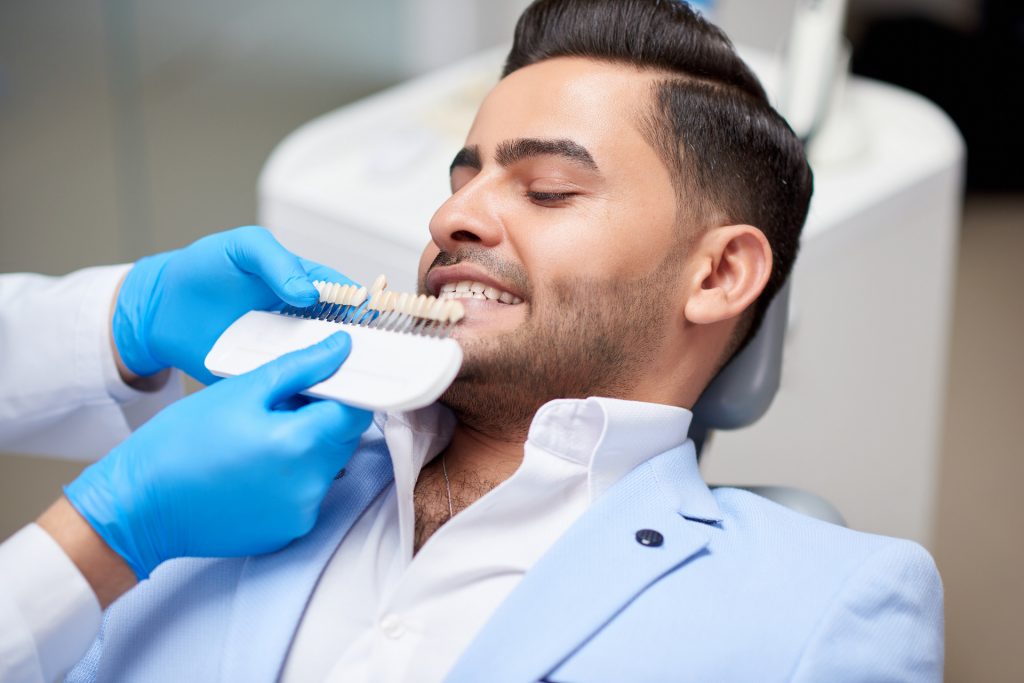
Patient Comfort & Sedation Options
Patient Comfort & Sedation Options
Our goal is to provide you with the most advanced care possible in a comfortable and relaxed environment. Toward that end, we use the most current periodontal procedures, instruments, medications, and sterilization techniques.
Every procedure is done with your comfort and safety in mind. We work closely with your general dentist to ensure you get the best possible care. We want you to be completely informed of your condition and encourage you to ask any questions you may have regarding your treatment and care. Please feel free to ask questions before, during, or after any procedure.
Patient Safety
We adhere to the highest professional standards of cleanliness, sterilization, and radiation control. Our staff regularly attend safety seminars and are knowledgeable on the latest techniques.

Patient Comfort
While no dental procedure is 100% comfortable, we try to minimize any discomfort you might feel. Many of our patients make statements like, “This wasn’t even painful. How did you do that?” The following are some of the latest techniques we use to provide you with as comfortable an experience as possible:
Pre-medication
Patient comfort is one of the most important aspects of care. Patients have different needs for pain and anxiety control medication. Depending upon the procedure and your wishes, there are several medications we can prescribe.
Patients with certain medical conditions (e.g. valvular heart conditions and artificial joints) may be asked to pre-medicate with antibiotics prior to treatment. We do this with your safety in mind. Please inform us if you have a condition that might require pre-medication.
Sedation
For those patients who would feel more comfortable with sedation, we offer nitrous oxide and oral sedatives to help you relax during your treatment.
Your comfort is one of our primary concerns. If you have any questions about anesthesia or sedation, please do not hesitate to discuss these with us.
Injections of Anesthesia
We use a topical anesthetic on your gums first to desensitize them and then administer the injection gently and precisely to reduce the burning sensation that can be experienced.
Cosmetic Periodontics
Enhancing Your Smile with Cosmetic Periodontics
Healthy gums are an important part of your beautiful smile. Our periodontists are expert in maintaining the optimum health of your gums as well as their Esthetics.
Do you have a gummy smile?
A smile is said to be ‘gummy’ if a significant amount of upper gingival tissue (gum tissue) is exposed when laughing or smiling. This gives the effect of the upper teeth being too short, and can make sufferers feel self-conscious.
Ideally your smile should reveal very little gum, and visible tissue should look balanced and even in contrast with your upper lip. Your smile will depend on the shape of your teeth and their size, as well as the shape and size of your lips. Fortunately, a gummy smile is something that can be corrected through cosmetic periodontal treatment.
Procedures: Esthetic Crown Lengthening & Gingival Contouring
Do you have roots exposed by gum recession?
Gum recession can expose tooth roots and show more of your teeth than normal. Longer looking teeth and exposed tooth roots give an “old” appearance to your smile. Some people cover their mouths when they smile for this very reason.
Normally gum tissue surrounds and protects the delicate roots of your teeth. Exposed tooth roots are prone to tooth decay, root canals, discoloration and actual jawbone loss. All of this can lead to tooth loss in advanced cases.
Procedures: Soft Tissue Grafting
Do you have missing teeth?
Dental implants are regarded as the preferred approach for replacement of missing teeth as they preserve bone structure and allow you to comfortably and effectively.
Learn more about Dental Implants.
Cosmetic Procedures
- Crown Lengthening
- Soft Tissue Grafting
- Ridge Augmentation
Esthetic Crown Lengthening & Gingival Contouring
Sometimes the teeth are quite small in relation to the gum tissue. This can create an unattractive “gummy” smile. An uneven gum line can also be distracting.
The gum line, and the bone just beneath the gum line, can be lowered to change the appearance of your smile. This can create a more even gum line or make the teeth appear longer. “Gingival (gum) contouring” is the process of recontouring the gum only. “Crown lengthening” refers to recontouring of both gum and supporting bone.
Procedure: Your periodontist administers a local anesthetic and gently recontours excess gum and bone tissue to expose more of your natural teeth.
Soft Tissue Grafting
Functional Soft Tissue Grafting
Normally gum tissue surrounds and protects the delicate roots of your teeth. Exposed tooth roots are prone to tooth decay, root canals, discoloration and actual jawbone loss. All of this can lead to tooth loss in advanced cases.
Functional soft tissue gum grafting replaces the missing gum tissue and protects your teeth against further recession and persistent sensitivity. For this reason, soft tissue grafting may be recommended even for back teeth.
Cosmetic Soft Tissue Grafting

In addition to the functional problems previously mentioned, receding gums can look unsightly.
Longer looking teeth and exposed tooth roots give an “old” appearance to your smile. Some people cover their mouths when they smile for this very reason.
Cosmetic soft tissue grafting can cover up these exposed root surfaces to some degree adding a new youthful appearance to your smile. In your initial consultation, we will thoroughly explain what can be achieved/expected in your particular case.
Ridge Augmentation
Sometimes after an extraction, a sunken spot or concave appearance will develop in your gum line. This looks unsightly and can also jeopardize the appearance of a bridge that goes over the area. Grafting material can be inserted under the gum to fill out this depression.
Ridge augmentation can also be used to build up an area of bone so that a dental implant can be placed.
Procedure: Your periodontist administers a local anesthetic and gently opens the area. He then fills the sunken area with grafting material.
Crown Lengthening
The “crown” is the part of a tooth visible above the gumline. Sometimes more of the tooth below the gums must be exposed to fill a cavity near the gumline or place a new crown on a broken tooth. “Crown lengthening” provides more tooth structure for this to be done. This helps to ensure that the restoration can be fitted properly by the dentist without causing gum irritation.
Crown lengthening can also be done to correct a “gummy smile.” See Esthetic Crown Lengthening and Gingival Contouring for more information.
Procedure: Your periodontist administers a local anesthetic and gently recontours excess gum and bone tissue to expose more of your natural tooth. A few weeks later, the dentist can restore the tooth with a filling or crown with accurately fitting margins that respect the gums by not “impinging” or extending underneath the gums.
Bone Grafting
Your jawbone is what supports your teeth and gums. Unfortunately, severe periodontal infection dissolves parts of your jawbone. This bone loss can eventually lead to the loss of your teeth. The first step of treatment is to remove the periodontal disease, which halts the bone loss. Then we repair the damage that has occurred. In many cases, various bone grafting techniques can be used to re-grow some of the jawbone that was lost.
Procedure: Your periodontist administers a local anesthetic and gently opens the area. He then removes the periodontal disease, repairs the bone damage and fills in the damaged area with bone grafting material.
Orthodontic Exposure of Impacted Teeth
Impacted Teeth Exposure
When a tooth fails to erupt through the gum, it is impacted. In addition to the numerous problems impacted teeth can cause, they prevent the movement of teeth for orthodontic treatment.
The procedure used here involves uncovering part of the crown of the tooth and bonding a special orthodontic bracket onto the tooth crown. These special brackets have a pre-attached chain that can then be tied to your regular orthodontic wires.
Your orthodontist will then use the chain to pull the impacted tooth into the proper position.
Piezosurgery
In order to place an implant that will be most successful, it may be necessary to modify the jawbone to create the most ideal site to receive the implant. Piezosurgery is often used to perform those surgeries that are needed.
Piezosurgery is a recently developed system for cutting bone without damaging soft tissue using ultrasonic micro-vibrations. Developed for use in Oral Surgery, Implantology, and Periodontics, this innovative technology allows doctors to perform procedures that were not previously possible.
Traditional methods of bone-cutting (i.e.: drills and burs) can result in some tissue and bone loss no matter how careful and precise the doctor may be. Piezosurgery eliminates this risk. Instead of drilling, Piezosurgery uses ultrasonic vibrations produced by a special surgical instrument to achieve unparalleled precision and patient comfort.
The doctor is able to perform procedures such as extractions, crown lengthening, periodontal therapy, and implant site preparation with increased accuracy and minimal discomfort. Leading doctors across the country are achieving consistently positive results using Piezosurgery.
Patients are seeing amazing results with faster healing time, less swelling, and less post-operative pain!
